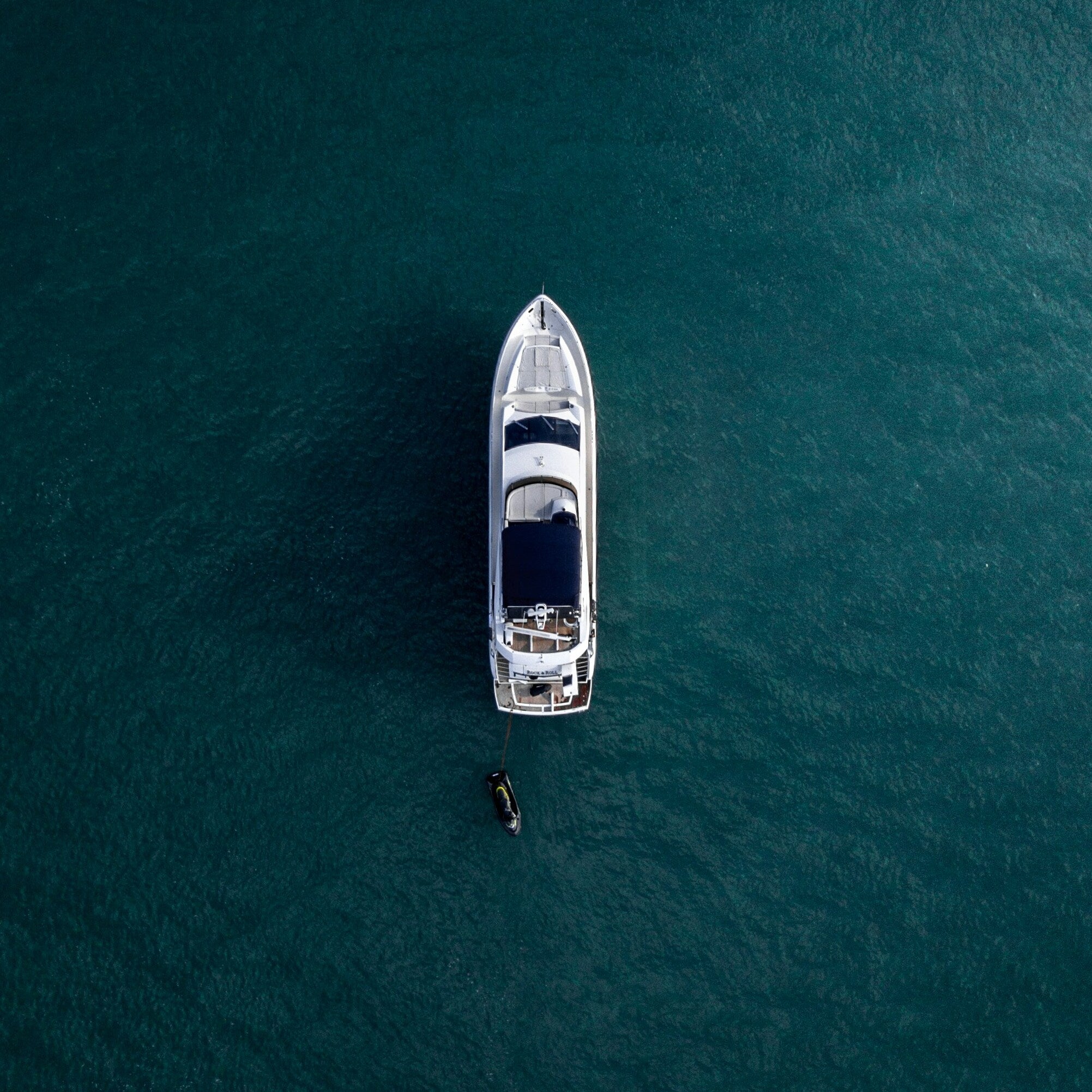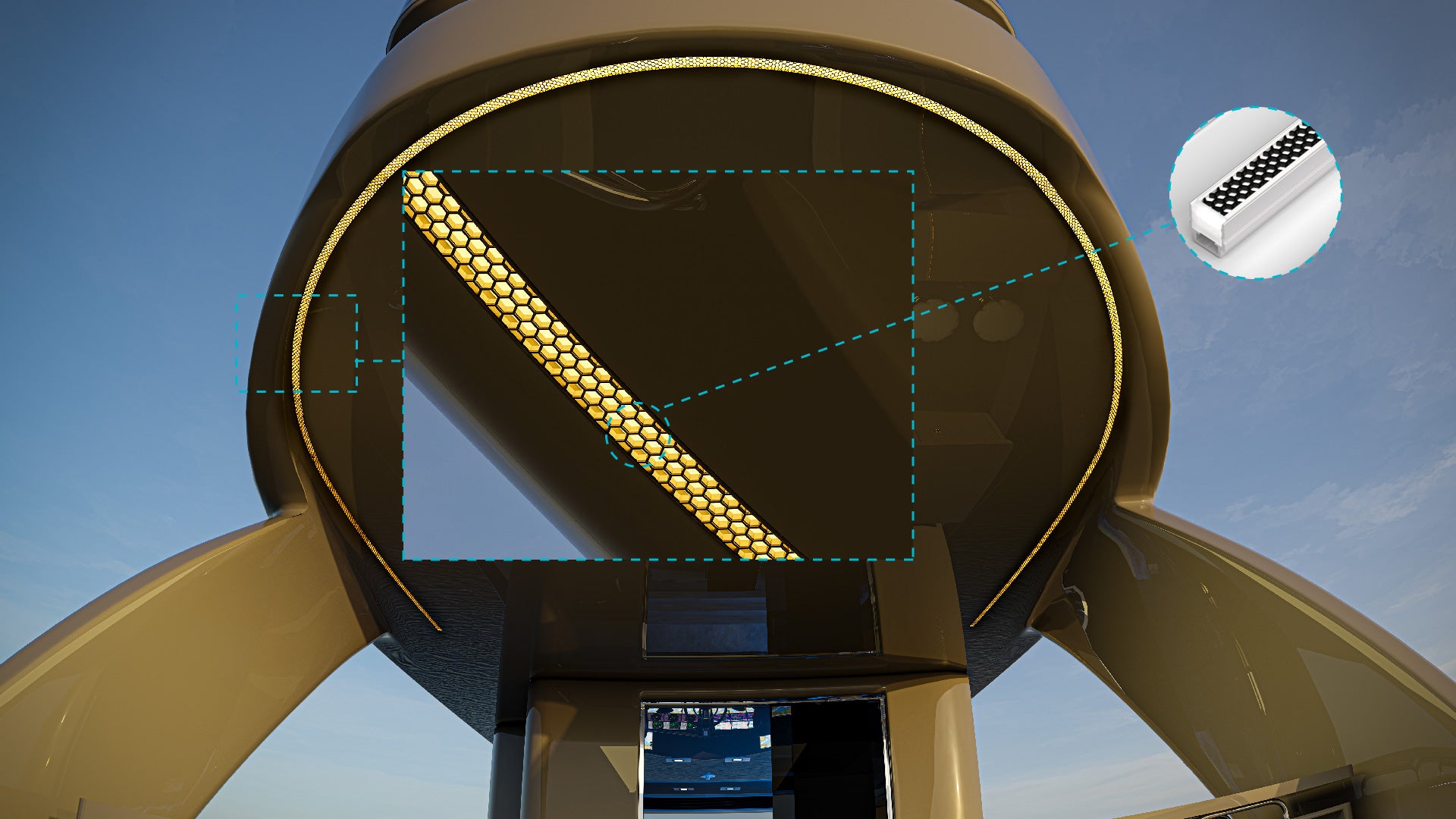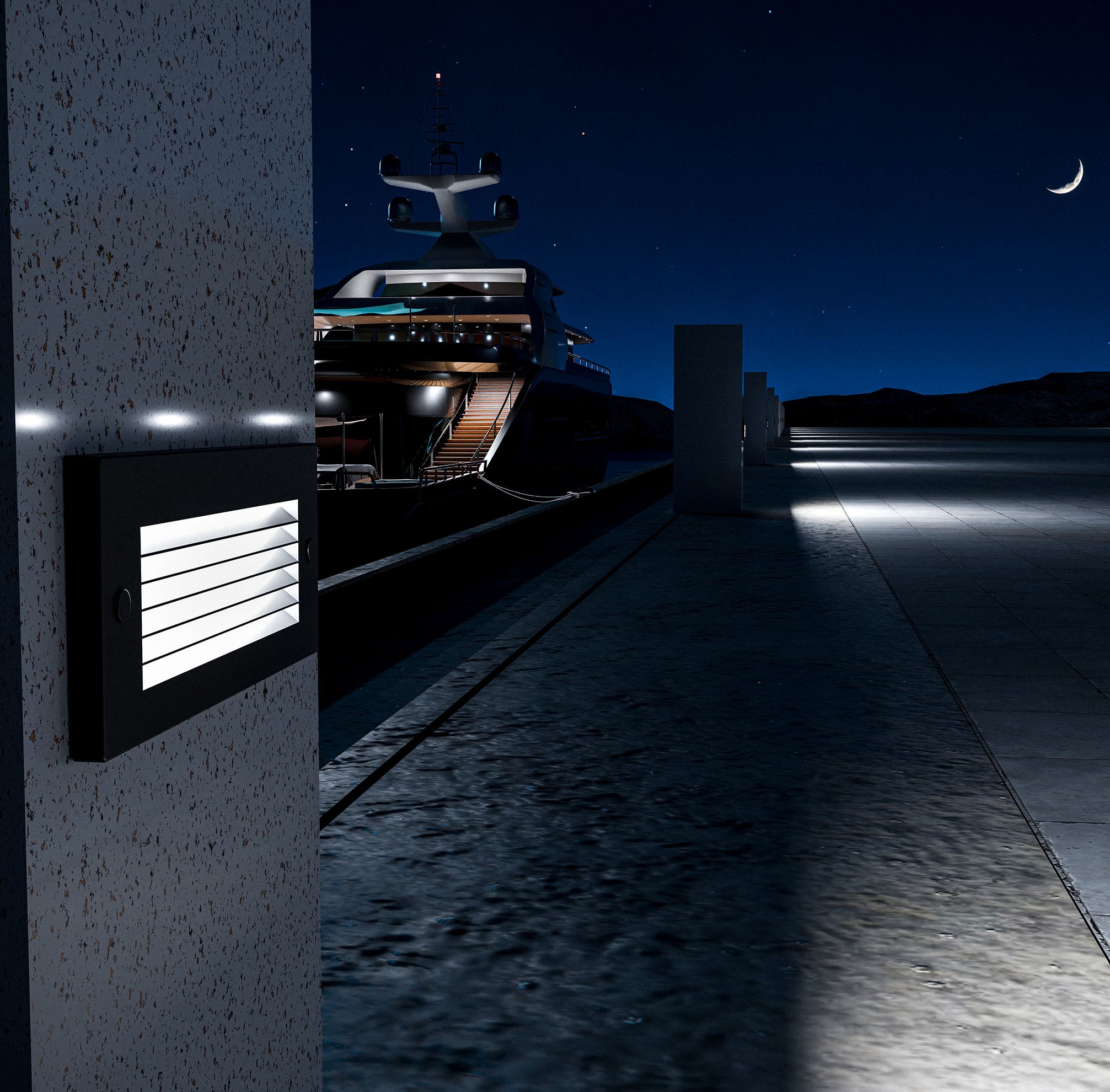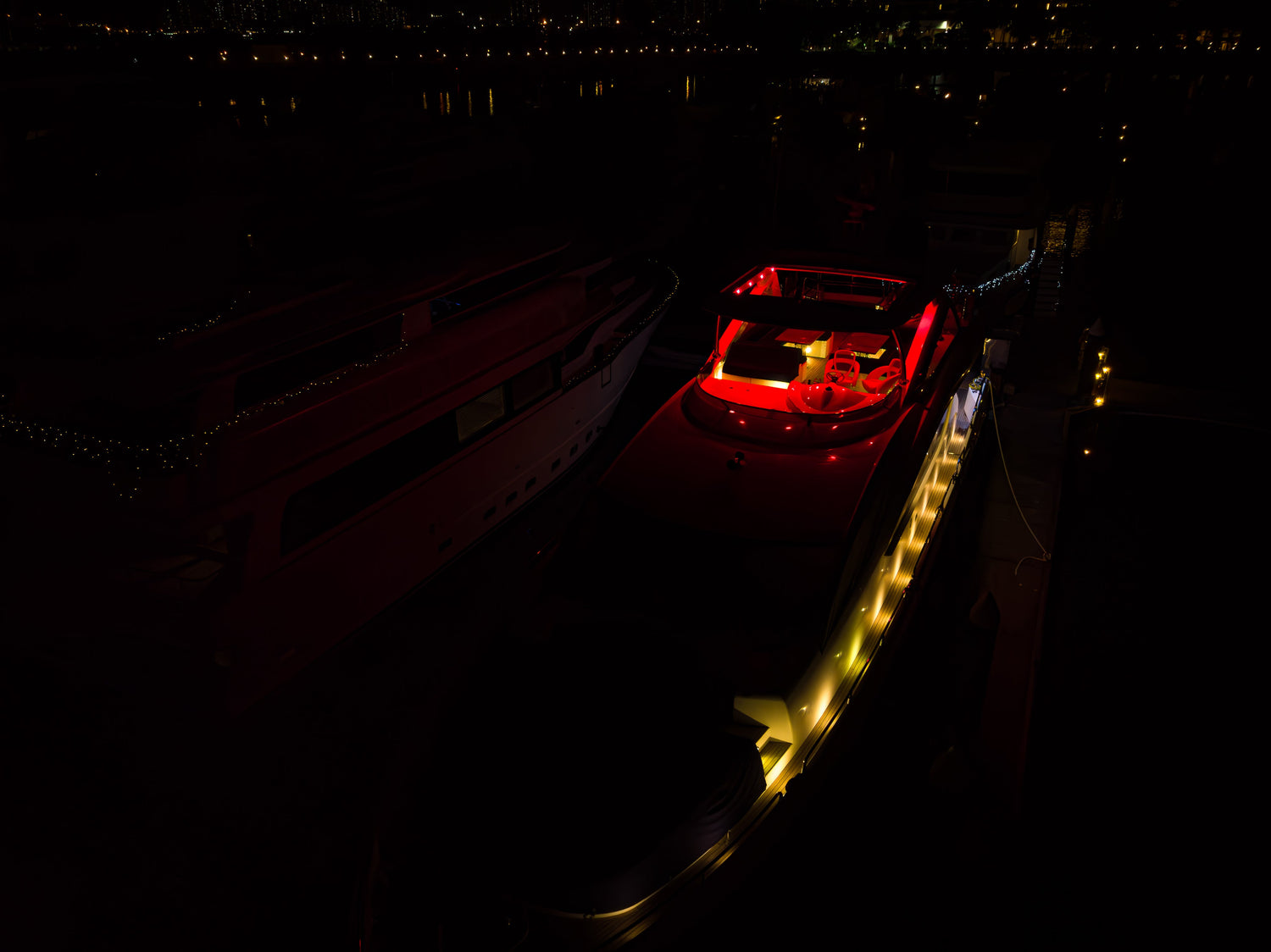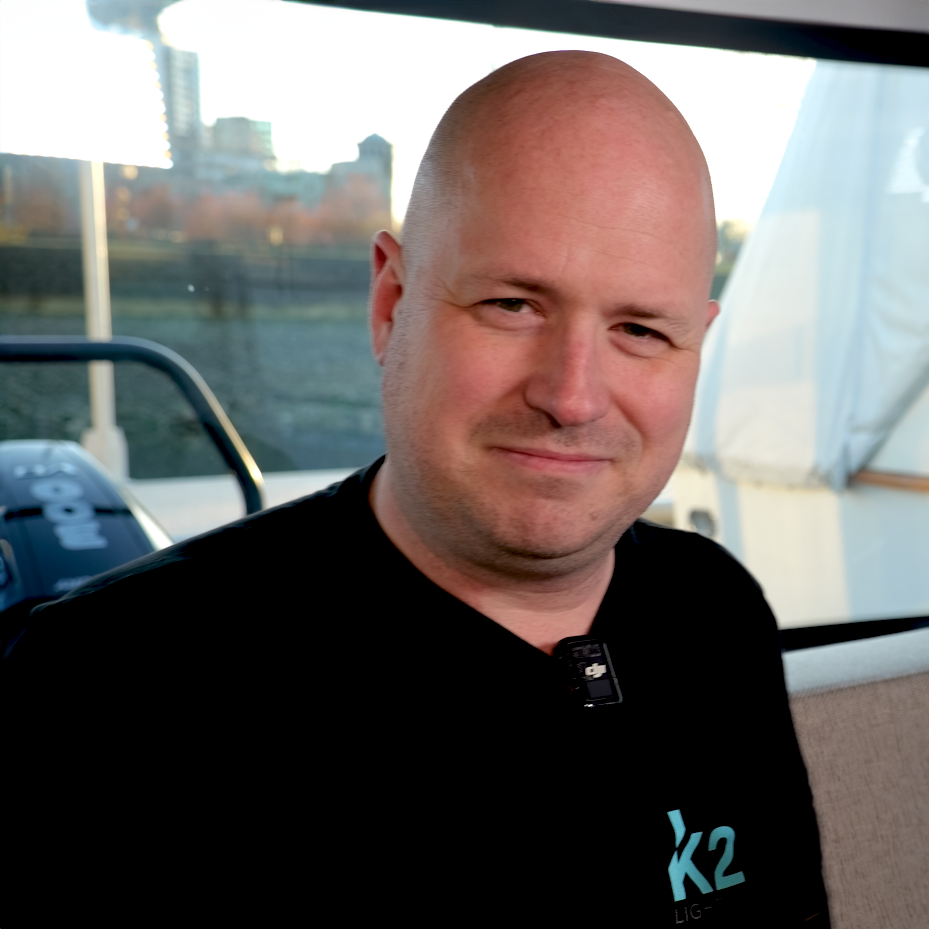Light pollution has become an increasingly critical issue in marine environments, affecting ecosystems, coastal communities, and the overall health of our oceans. Defined as the excessive, misdirected, or intrusive use of artificial light, light pollution disrupts natural rhythms, impacts wildlife behavior, and diminishes the beauty of the night sky. In marine settings, the effects are particularly pronounced, with poorly designed lighting systems on boats, docks, and marinas contributing significantly to the problem.
Marine-grade LED lighting offers an effective solution, combining advanced technology with responsible lighting practices to minimize environmental impact while maintaining essential visibility and safety. By adopting smarter lighting strategies, boat owners and marina operators can reduce unnecessary light spillage, conserve energy, and preserve the delicate balance of marine ecosystems.
This blog explores how responsible marine LED lighting practices can play a pivotal role in combating light pollution, offering practical tips, actionable strategies, and insights into sustainable lighting solutions.
Understanding Light Pollution in Marine Environments
What is Light Pollution?
Light pollution refers to the excessive or misdirected use of artificial light, which creates adverse effects on humans, wildlife, and ecosystems. It manifests in various forms, including skyglow (light scattered in the atmosphere), glare (harsh brightness causing reduced visibility), light trespass (unwanted light spilling into unintended areas), and over-illumination (excessive brightness). In marine environments, these effects disrupt natural patterns, create navigational hazards, and contribute to energy waste.
Poorly positioned lights on boats, docks, and marinas are common contributors, casting unnecessary light upwards, into the water, or beyond their intended targets. This not only wastes energy but also creates confusing visual cues for marine life and fellow boaters.
How Boats and Marinas Contribute to Light Pollution
Marine light pollution often originates from poorly designed floodlights, overpowered navigation lights, and decorative accent lighting that lacks directionality. Marinas, with their extensive lighting infrastructure, can unintentionally contribute significantly to light trespass and skyglow if fixtures are not properly shielded or positioned.
Boats anchored near sensitive marine habitats, such as coral reefs or sea turtle nesting beaches, also pose a risk when deck lights, underwater lights, or improperly angled navigation lights spill into natural environments.
The Environmental Impact of Light Pollution
Excessive artificial lighting disrupts marine ecosystems in profound ways. Sea turtles, for example, rely on moonlight to navigate to the ocean after hatching. Artificial light can confuse hatchlings, leading them away from the water and increasing mortality rates. Similarly, fish species sensitive to light can experience disrupted spawning cycles, while nocturnal marine animals suffer from altered behavioral patterns.
For coastal communities, light pollution also reduces the clarity of the night sky, diminishing stargazing opportunities and affecting tourism in regions known for pristine natural views.
Why Marine LED Lighting is Part of the Solution
Precision Control and Directionality
One of the key advantages of marine LED lighting is its precise control over light direction. Unlike traditional fixtures, LED lights can be engineered to focus light exactly where it’s needed, reducing spillage into unintended areas. Adjustable beam angles and shielded designs ensure that light is targeted and does not scatter into the sky or water unnecessarily.
This level of precision allows boat owners and marina operators to illuminate specific zones—like walkways, decks, or docking areas—without creating excessive glare or disrupting the surrounding environment.
Dimmable LED Technology
Dimmable marine LED fixtures offer another layer of control, allowing users to adjust brightness levels based on specific needs. For example, high-intensity lighting may be necessary during docking or maintenance tasks, but dimmer levels are sufficient for stationary boats at anchor.
By using dimmable lights, boat owners can reduce over-illumination and energy waste, creating a balance between functionality and environmental responsibility.
Energy Efficiency Reduces Excessive Use
LED lighting is inherently energy-efficient, consuming significantly less power than halogen or incandescent alternatives. This efficiency reduces reliance on continuous lighting, as fixtures can remain powered for extended periods without depleting onboard batteries or drawing excessive energy from marina power supplies.
In turn, reduced energy consumption discourages unnecessary lighting practices, further minimizing light pollution and associated environmental impacts.
Best Practices for Reducing Light Pollution with Marine LED Lighting
Use Warm-Color LED Lights
The color temperature of lighting plays a crucial role in light pollution. Warmer tones, typically in the range of 2700K to 3000K, are less disruptive to marine ecosystems than cool white or blue light. Warm LEDs create a softer glow that reduces glare, minimizes skyglow, and has a less pronounced impact on nocturnal wildlife.
Boaters and marina operators should prioritize warm-colored LEDs for general illumination, reserving cooler tones only for specific task lighting where necessary.
Install Shielded and Directional Fixtures
Shielding is essential to prevent light from escaping upwards or spilling into areas where it’s not needed. Properly shielded LED fixtures direct light downward or toward targeted zones, reducing light trespass and glare.
Fixtures with adjustable heads allow precise positioning, ensuring that light illuminates specific areas—such as docks, gangways, or workspaces—without disrupting nearby habitats.
Avoid Over-Illumination
Over-illumination occurs when lighting fixtures are excessively bright or poorly placed, causing unnecessary glare and energy waste. Instead of installing high-lumen lights across an entire deck or marina, focus on using task-specific lighting solutions tailored to each area’s needs.
Assess lighting requirements carefully and avoid the common mistake of compensating for poor fixture placement with excessive brightness.
Implement Smart Lighting Controls
Smart lighting controls, such as motion sensors, timers, and dimmers, can dramatically reduce unnecessary illumination. Motion-activated LEDs ensure that lights are only active when movement is detected, conserving energy while providing security when needed.
Timers and programmable lighting schedules allow operators to control when lights are turned on and off, preventing continuous operation during low-activity hours.
Responsible Use of Marine LED Lights on Boats
Minimize Accent and Decorative Lighting
While accent and decorative lighting can enhance a boat’s aesthetic appeal, excessive use can contribute significantly to light pollution. Boats anchored near sensitive ecosystems should minimize accent lighting, especially underwater LEDs, which can disrupt marine life.
Opt for fixtures with dimming options and use decorative lighting sparingly, focusing on essential areas for functionality and safety.
Adjust Lighting When Anchored
When boats are anchored in ecologically sensitive areas, such as coral reefs or nesting beaches, lighting practices should prioritize environmental responsibility. Deck lights and underwater LEDs should be dimmed or turned off when not actively needed.
Motion-activated lighting can also provide a balance between security and conservation, ensuring illumination only occurs when activity is detected.
Proper Placement of Navigation and Safety Lights
Navigation and safety lights are essential for compliance and visibility, but poor placement can lead to excessive glare and unnecessary light spillage. Marine-grade LED navigation lights should be installed according to international maritime standards, ensuring they are visible to nearby vessels without causing visual disruption.
Adjusting beam angles and using fixtures with focused optics further minimizes light pollution while maintaining safety standards.
Creating Light-Conscious Marinas with LED Technology
Assessing Marina Lighting Needs
Marinas are complex environments with diverse lighting needs, from pathways and docks to recreational areas and parking lots. Conducting a lighting audit is the first step toward reducing light pollution. This involves assessing the placement, brightness, and type of existing fixtures to identify areas of unnecessary light spillage or over-illumination.
Marina operators should prioritize fixtures that direct light downward and use targeted lighting to focus on functional areas, such as docking berths, entryways, and gangways. Implementing lighting zones—where specific areas are illuminated only when needed—can further reduce unnecessary brightness and energy waste.
Adopting Downward-Facing Fixtures
Downward-facing LED fixtures are one of the most effective tools in reducing light pollution at marinas. Unlike omnidirectional lights, these fixtures focus light directly onto the intended area, such as pathways, docks, or workstations. This prevents unnecessary upward or sideways light spill, minimizing skyglow and glare that can affect both humans and wildlife.
Well-placed downward-facing LEDs also improve operational efficiency by focusing light precisely where it’s needed, ensuring optimal illumination without excess brightness.
Using Low-Glare Lighting Solutions
Glare not only contributes to light pollution but also poses a safety risk, especially in high-traffic marina zones. Low-glare LED fixtures, often equipped with diffused lenses or shielding technology, reduce harsh reflections on water surfaces and create a more comfortable visual experience.
By minimizing glare, marinas improve visibility for boat operators and pedestrians while reducing the environmental impact of scattered light. Thoughtful fixture placement combined with low-glare technology can significantly enhance both safety and sustainability.
The Role of Regulations and Compliance in Reducing Light Pollution
International Maritime Organization (IMO) Standards
The International Maritime Organization (IMO) sets global standards for marine navigation lights and general vessel lighting practices. Compliance with IMO regulations ensures that lighting installations maintain safety without contributing to unnecessary light pollution.
These guidelines often emphasize brightness limitations, beam direction, and fixture positioning to reduce environmental impact. Boat owners and marina operators must stay informed about IMO requirements to align their lighting systems with global best practices.
Local Marina and Coastal Policies
Many coastal regions and marina authorities have introduced local policies to combat light pollution. These policies may include restrictions on excessive outdoor lighting, color temperature limits, and mandatory shielding requirements for fixtures.
Marina operators should work closely with local authorities to ensure their lighting systems comply with these guidelines. Engaging in regular audits and consultations helps maintain compliance while fostering a culture of environmental responsibility.
Participating in Environmental Certifications
Programs like Dark Sky Compliance and eco-certifications offer guidelines and recognition for marinas that prioritize sustainable lighting practices. Achieving these certifications not only reduces light pollution but also enhances a marina's reputation as an environmentally conscious facility.
Compliance with these certifications often involves using shielded fixtures, optimizing lighting schedules, and minimizing the use of cool-colored LEDs.
Environmental and Economic Benefits of Reducing Light Pollution
Preserving Marine Ecosystems
Reducing light pollution directly benefits marine ecosystems by minimizing disruptions to natural behaviors and biological rhythms. Species such as sea turtles, migratory birds, and nocturnal fish rely on natural light cues for navigation, feeding, and breeding. Excessive artificial light can confuse these cues, leading to habitat disruption and population decline.
By adopting responsible LED lighting practices, boat owners and marina operators can help protect these ecosystems and contribute to biodiversity conservation.
Energy and Cost Savings
Marine-grade LED lights are not only effective in reducing light pollution but are also highly energy-efficient. Their low power consumption reduces the operational costs of running lights for extended hours, resulting in substantial savings on electricity bills.
Smart LED systems with motion sensors and timers further optimize energy use, ensuring lights are active only when needed. These energy savings add up over time, making LED lighting a financially sound investment for marinas and boat owners alike.
Improving Boating Experiences
Excessive glare and poorly directed lights can create visual discomfort and safety hazards for boaters, especially at night. By using low-glare fixtures and focusing light only where it’s needed, marinas and boat operators can create a visually appealing and safe environment.
Clear visibility and reduced light pollution also enhance the boating experience, allowing visitors to enjoy the natural beauty of the night sky and surrounding waters.
Steps Boaters Can Take to Support Light Pollution Reduction
Audit Your Boat’s Lighting System
Boat owners can start by auditing their vessel’s current lighting system. Identify fixtures that are overly bright, poorly shielded, or misdirected. Replace outdated bulbs with marine-grade LED fixtures designed for precision lighting and minimal glare.
A thorough lighting audit helps pinpoint problem areas and sets the foundation for a more sustainable lighting plan.
Use Timers and Motion Sensors
Timers and motion-activated LED systems are valuable tools for preventing unnecessary lighting. Timers can be set to activate lights during high-traffic hours and switch them off during periods of low activity. Motion sensors ensure that lights only illuminate when movement is detected, reducing continuous light output and conserving energy.
These technologies are particularly effective for deck lights, walkway fixtures, and onboard storage lighting.
Stay Informed About Local Guidelines
Boaters must stay updated on local marina and coastal lighting regulations. Many protected coastal zones have strict guidelines regarding lighting types, fixture placement, and brightness levels. Compliance with these rules helps minimize environmental disruption and reduces the risk of penalties or fines.
Responsible boaters should also advocate for light pollution awareness within their boating communities, encouraging others to adopt sustainable lighting practices.
Future Innovations in Marine LED Lighting Technology
Smart Lighting Integration
The integration of smart LED technology is revolutionizing marine lighting. With mobile app controls, boat owners and marina operators can remotely manage lighting systems, adjust brightness levels, and monitor energy usage in real-time.
This connectivity allows for more efficient lighting management, reducing unnecessary power consumption and optimizing environmental impact.
Adaptive Lighting Technologies
New technologies, such as adaptive lighting systems, automatically adjust brightness levels based on ambient light conditions or specific scenarios. For example, fixtures may dim during low-traffic hours and brighten during docking or maintenance tasks.
These adaptive systems ensure efficient lighting while minimizing unnecessary illumination, striking a balance between functionality and sustainability.
Enhanced Solar-Powered Systems
Advances in solar-powered LED technology have made these systems more reliable and efficient. Modern solar panels store more energy and operate LED fixtures for longer durations, making them ideal for off-grid boating and remote marina locations.
Solar-powered LED systems are an eco-friendly option for reducing carbon footprints and energy costs in marine environments.
Reducing light pollution in marine environments is not just an environmental responsibility—it’s a necessity. With the adoption of marine-grade LED lighting systems, boaters and marina operators can strike a balance between safety, functionality, and ecological care. From precision lighting and dimmable fixtures to smart controls and solar-powered technology, LEDs offer a sustainable pathway to responsible illumination.
By taking thoughtful steps, staying informed, and embracing innovative lighting practices, we can all contribute to preserving marine ecosystems and reducing light pollution for future generations.
Explore K2 Lighting's range of sustainable marine LED lights, designed to reduce light pollution while delivering top performance and energy efficiency.

